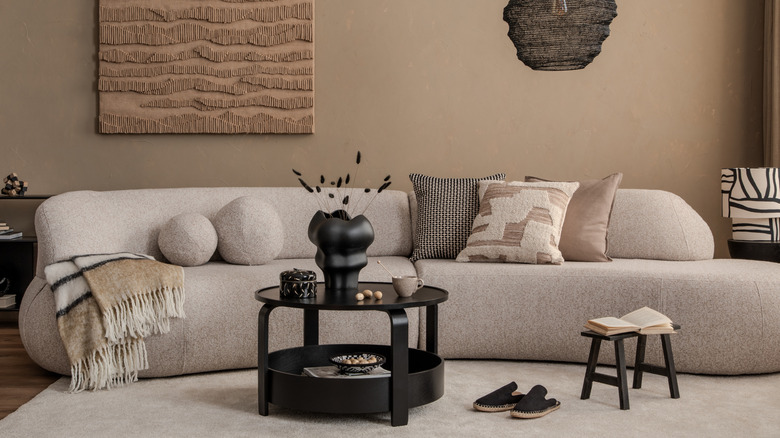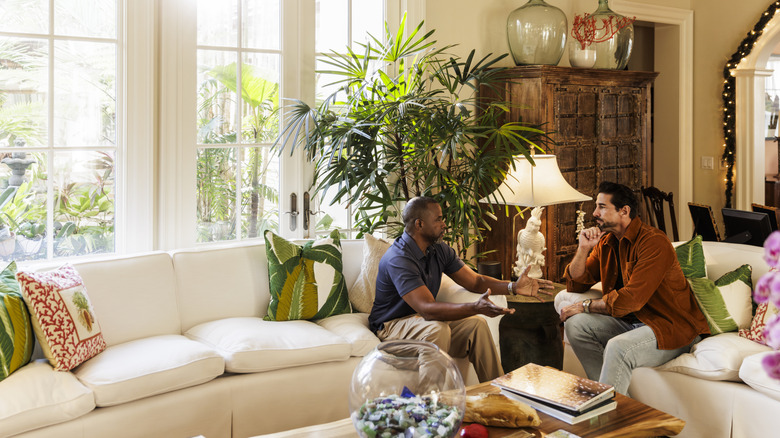Family Rooms Vs Living Rooms: The Real Difference (& What It Means For Your Home)
Many people use the terms "family room" and "living room" interchangeably, assuming it's just a matter of preference, like how some people call a remote a clicker. However, there actually is a difference between the spaces, as you might notice in homes where both a living and family room exist. If you've ever wondered what truly separates the two categories, you're not alone. When you truly compare the two spaces for their purposes, it's not just informative — it can actually be a helpful perspective when planning the layout and design of your home. The true difference comes down to function, as living rooms are meant to provide a formal space for special occasions and hosting guests, while a family room is a more casual, comforting spot to gather daily.
With this perspective in mind, it can change how you see and use these spaces in your home. The nuances between both rooms can help to better define your space, creating a design that feels ready to host or relax depending on where you are. If you plan to embrace these differences in your own home, taking certain approaches with your design could be worth considering.
Living rooms host impressive, formal gatherings
You might think that all living rooms are for lounging, but they're actually meant for a more sophisticated purpose. While they are a space to gather and sit back, the main function of living rooms is reserved for hosting guests in a more proper fashion that encourages conversation, rather than entertainment. You're less likely to find a television in a proper living room, although some may have a chic record player to offer light background music for guests. It's a designated spot when having visitors over for formal gatherings like cocktails, coffee, or polite conversation before dinner.
The living room design is also centered around formality. This is where you want to make a good impression for guests, so it's a great location to show off your favorite decor pieces like precious artwork, antique furniture, or meaningful family heirlooms. The living room is often located towards the front entrance of the home, welcoming visitors with impressive design and a convenient place to sit down. The style of these rooms should feel more elevated and put-together with minimal clutter and chic interiors. When arranging your living room, seating is key, and should typically be oriented to promote socializing and give the room an elevated flow. It's okay to be more delicate with your design — a sleek, white sofa may be a risky a choice for your everyday lounging, but it makes sense in the living room considering it's mainly reserved for special occasions.
Family rooms are all about casual, daily comfort
In contrast to living rooms, the family room is a more personal space that's meant for day to day relaxation and entertainment. In this room, cozy recliners and large television sets are welcome and fitting to the space. If you're having some close pals over to wear pajamas and play board games, the family room offers a more casual and comfortable space to do so. It's also meant for daily enjoyment, whether it's winding down after work to watch your favorite sitcom with the family, or cozying up with some coffee and blankets on a lazy Sunday morning. Comfort is at the core of the family room, so it's a great place to prioritize plush interiors, busy bookshelves, and lighting trends that will make your room feel cozier than ever.
The family room is often located towards the back of the home or in basements, with less visibility for formal visitors — which means less expectations to impress anyone. Feel free to display your quirky childhood art projects and goofy photo memories without fear of judgement to your style. The aesthetic is more loose and comfortable, but it also relies greatly on practicality. For this space, it's helpful to consider sofa materials that are easy to clean, deep spacious seating, and hefty coffee tables for snacks and drinks. This doesn't mean your family room can't also be stylish — instead, it's where you can use style to create a space with personality that you find comforting and inviting every day you come home.


